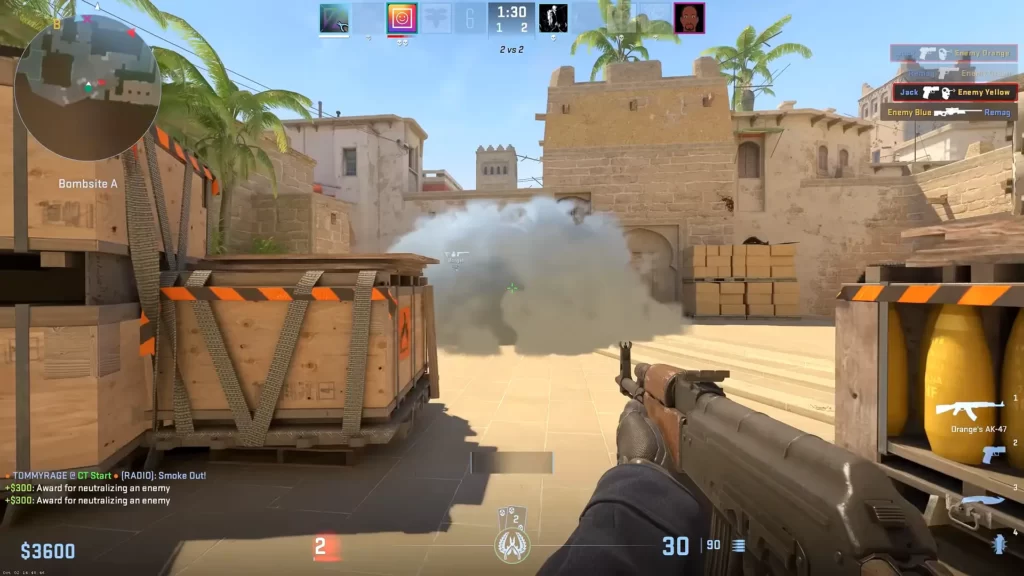Benz Drops Insights
Stay updated with the latest news and trends in the automotive industry.
Griefing Penalties in CS2: Why the Ban Hammer Needs a Reality Check
Explore the controversial world of griefing penalties in CS2 and discover why it’s time to rethink the ban hammer!
Understanding Griefing Penalties in CS2: Fairness or Overreach?
In the competitive landscape of CS2, the issue of griefing has emerged as a significant concern, prompting developers to implement strict penalties. Griefing refers to the act of intentionally frustrating or sabotaging teammates, which can disrupt the overall gaming experience. Understanding the griefing penalties in CS2 is crucial for players not only to avoid punishments but also to foster a healthier and more enjoyable gaming community. With a focus on accountability, the game’s developers have introduced measures that some players consider fair, while others view as an overreach.
Critics of the griefing penalties argue that the system can be overly harsh, especially for players who may have legitimate reasons for their in-game behavior. For example, a player experiencing connection issues or personal circumstances may unintentionally disrupt team dynamics. On the other hand, advocates of the penalties believe that a clear and enforced set of rules is essential to maintain fair play. As the conversation evolves, it raises important questions about what constitutes acceptable behavior and how far developers should go to ensure the integrity of the game. Balancing fairness and enforcement remains a challenge that continues to define the player experience in CS2.

Counter-Strike is a popular tactical first-person shooter that pits teams against each other in a variety of objective-based scenarios. Players can earn rewards from their gameplay, including items like the Silver Case, which adds an element of excitement and customization to the gaming experience.
The Impact of Griefing on CS2 Communities: A Deep Dive
The phenomenon of griefing in Counter-Strike 2 (CS2) has sparked significant discussions within gaming communities. Griefing typically refers to behavior aimed at intentionally disrupting or annoying fellow players, which can range from minor incidents to more extreme forms of harassment. The impact of such behavior can be profound, often leading to toxic environments that deter both new and seasoned players from enjoying the game. This not only diminishes the quality of gameplay but can also affect player retention rates.
Moreover, communities that fail to address griefing can find themselves plagued by long-term issues, including dwindling active users and a reputation for being unwelcoming. To combat this, many CS2 communities are implementing stricter rules and sanctions against griefing behaviors. For instance, reporting systems and player moderation teams are becoming essential tools in maintaining a positive gaming experience. By fostering a safer environment, these communities aim to shift the focus back to skill development and teamwork, ultimately enhancing the appeal of CS2.
Is the Ban Hammer Effective? Analyzing Griefing Penalties in CS2
The effectiveness of the Ban Hammer in Counter-Strike 2 (CS2) has become a hot topic among players, especially in light of the ongoing issue of griefing. Griefing not only disrupts the gaming experience but also tests the integrity of competitive play. Many players argue that while the punitive measures such as temporary bans and permanent account suspensions are necessary, their implementation often varies in severity and consistency. This inconsistency leaves some players feeling that the griefing penalties are not applied effectively, leading to ongoing disruptions in gameplay.
To better understand the impact of these penalties, it’s essential to analyze the response from the community and the game developers. Players have reported mixed experiences with the Ban Hammer; some believe it deters unwanted behavior, while others point out that it does not adequately address the root causes of griefing. Statistics regarding reported griefing incidents before and after the introduction of these penalties could provide insight into whether players genuinely feel safer and more respected in competitive matches. Thus, exploring the effectiveness of the Ban Hammer involves a closer look at community feedback, developer actions, and the overall gaming environment within CS2.